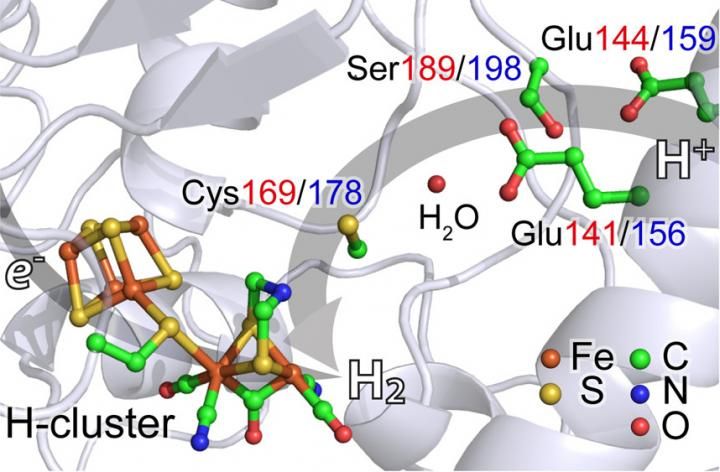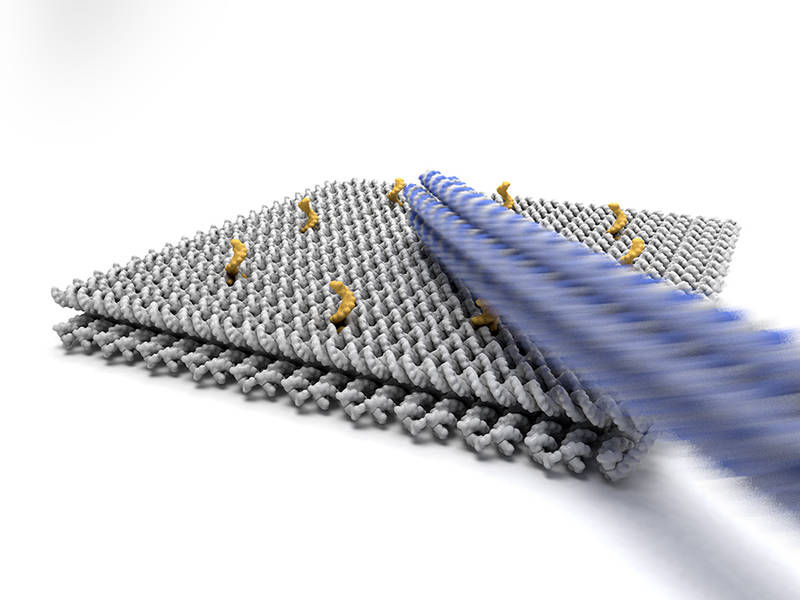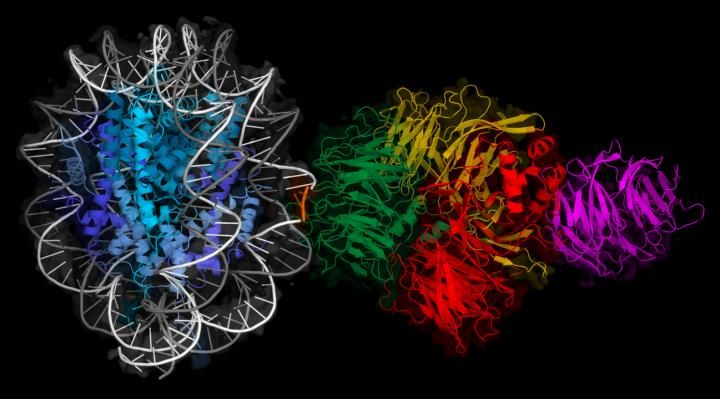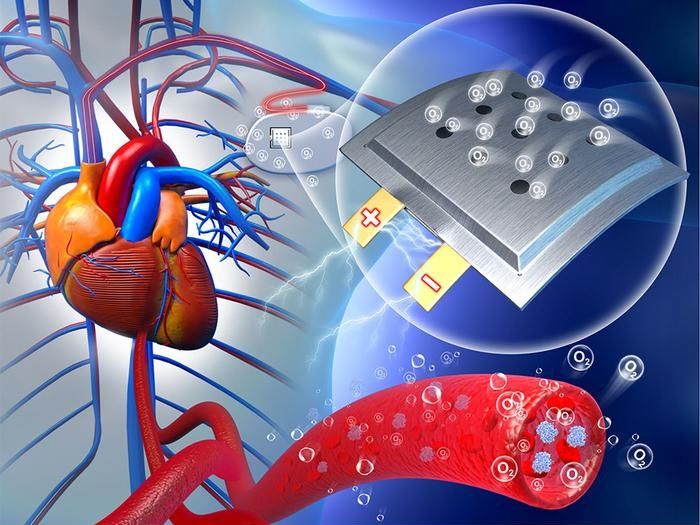Team of researchers in Vienna has decoded the structure of the ribonucleoprotein (RNP) of rabies virus
A research team of the Institute of virology of the University of Veterinary Medicine Vienna has achieved a major breakthrough in exploring the rabies virus: for the first time, researchers were able to exactly depict the structure of the RNP of this virus that is highly dangerous to terrestrial mammals.
The rabies virus (RABV) (genus Lyssavirus, family Rhabdoviridiae, order Mononegavirales) is the primary causative agent of rabies in terrestrial mammals. Human beings are also massively affected by this mortal danger. The WHO estimates the annual human death toll to be more than 55,000. The RABV particle consists of a cell derived membrane, in which multiple copies of the surface glycoprotein are anchored, and a helical ribonucleoprotein (RNP), which forms a conical tip at one end.
Although the individual components of the RNP had already been known, the exact structure of an intact RABV-RNP complex had not yet been identified. Using cryoelectron tomography, an imaging procedure allowing for the three-dimensional representation of the smallest biological structures, and a subsequent computer-assisted analysis by subtomogram averaging, a research team of the University of Veterinary Medicine Vienna around Christiane Riedel, the study’s first author, and Till Rümenapf, the study’s last author, has now succeeded in doing exactly that.
Two viruses as unlike siblings: similar structures, different appearances
The virus structure consists of a right-handed helix, with the 3’-terminal end of the genome located in the RNP cone, as observed in the related Vesicular stomatitis virus (VSV). Vesicular stomatitis is a virus disease with a mild course that mainly affects hoofed animals and may cause flu-like symptoms in humans. “In RABV, interactions between M- and N-proteins are responsible for the connection of neighbouring helical turns, while M-M interactions have been described for VSV. This results in a greater distance between the helix turns compared to VSV and, thus, in a shallower angle between the individual RNP turns and the central virus axis. This shows a surprising structural variability of the RNP when comparing VSV and RABV, although the crystal structures of the individual components that had already been determined, i.e. the N- and M-proteins, are highly homologous. To put it differently: Although the individual components of RABV and VSV are very similar, there are significant differences in the architectures of the RNPs of the two viruses,” explains Christiane Riedel.
Original publication
Christiane Riedel, Daven Vasishtan, Vojtěch Pražák, Alexander Ghanem, Karl-Klaus Conzelmann und Till Rümenapf; „Cryo EM structure of the rabies virus ribonucleoprotein complex“; Scientific Reports.
Most read news
Original publication
Christiane Riedel, Daven Vasishtan, Vojtěch Pražák, Alexander Ghanem, Karl-Klaus Conzelmann und Till Rümenapf; „Cryo EM structure of the rabies virus ribonucleoprotein complex“; Scientific Reports.
Organizations
Other news from the department science

Get the life science industry in your inbox
By submitting this form you agree that LUMITOS AG will send you the newsletter(s) selected above by email. Your data will not be passed on to third parties. Your data will be stored and processed in accordance with our data protection regulations. LUMITOS may contact you by email for the purpose of advertising or market and opinion surveys. You can revoke your consent at any time without giving reasons to LUMITOS AG, Ernst-Augustin-Str. 2, 12489 Berlin, Germany or by e-mail at revoke@lumitos.com with effect for the future. In addition, each email contains a link to unsubscribe from the corresponding newsletter.
Most read news
More news from our other portals
Last viewed contents

New X-ray spectroscopy explores hydrogen-generating catalyst

Piecework at the nano assembly line - Fast computer control for molecular machines
Sickle-cell_disease
Protein reactions identified with subatomic resolution
Hyperimmunoglobulinemia_D_with_recurrent_fever
Armenicum
Category:Canadian_neuroscientists
Alanine_transaminase

A new mechanism for accessing damaged DNA
'Sniffing' urine to detect prostate cancer could prevent unnecessary biopsies





















































